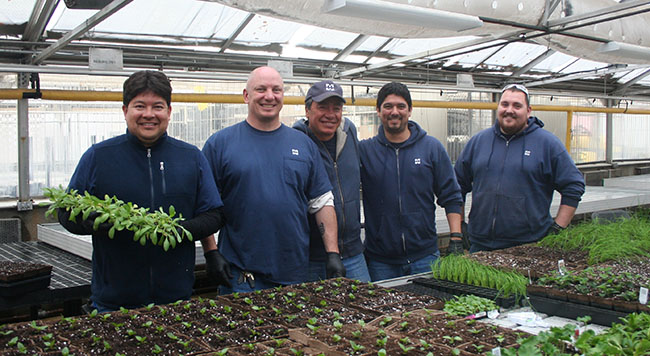
Each year Harper’s Roads and Grounds Crew home-grows the plants used for landscaping on campus and it is all happening right now in Harper’s greenhouse. Small plants called “plugs” are planted in individual pots. In about a month and a half, the plants will grow to their full size and will be ready to plant around campus. Plugs can cost as little as a penny a plug, and will grow into the same plant that would cost as much as $4.00 at the garden center. Starting plants this way helps to keep costs low and also provides the crew with valuable learning opportunities. This way the crew is able to watch and care for the plants as they mature from seedling to full plant. This spring, the crew planted over 1,300 plugs.
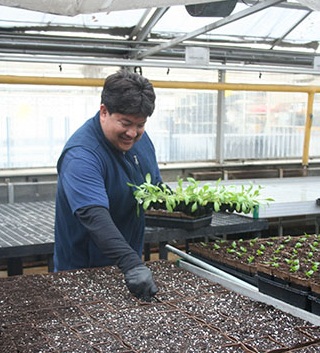
New this year to campus is the peat pot. In the past, plants were grown in small plastic pots, but with each individual plug getting planted in its own pot, the plastic and waste really adds up! Alternatively, the peat pots are made with decomposable, organic material. The pot is left on the plant when it is planted in the ground and it decomposes throughout the season, giving the plant nutrients.
There are nine types of annuals in the greenhouse this spring. Plants are chosen by flower color, texture and shape, the amount of water the plant requires and lower maintenance needs.
Some of the plants you will start to see around campus include:
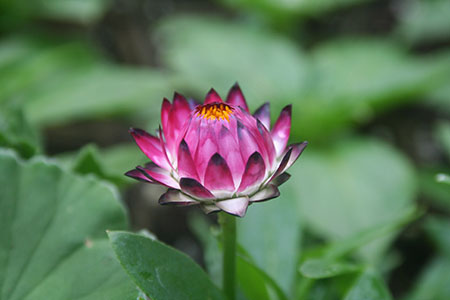
Strawflower "Cottage Rose"
With petals that feel like straw, they require very little water and prefer hot sun.
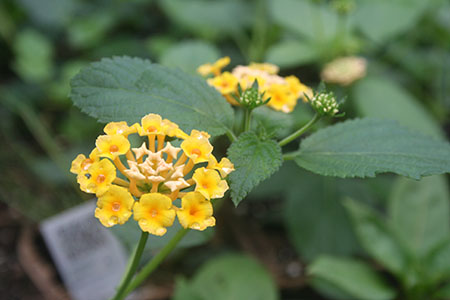
Lantana 'Confetti'
This plant is resistant to disease, loves hot sun and has flowers that range in color from yellow to orange to hot pink.

Begonia 'Santa Cruz Sunset'
This begonia works well in shade or morning sun and has a reddish orange flower. Because of its weeping shape, it works well in planters and retaining wall beds.
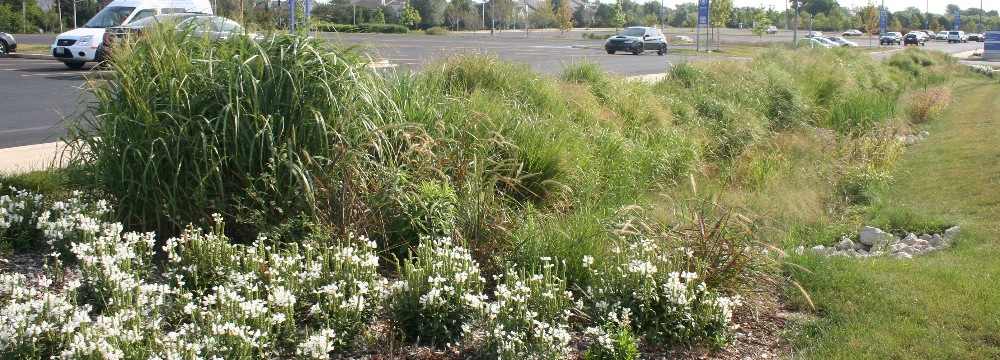
Vegetated swales act as a natural "cleaning" solution and are incorporated into the
north and east campus parking lots. When it rains, the water that falls on parking
lots picks up oil, battery acid, chemicals and other contaminants sitting on the pavement’s
surface and flushes them towards our ponds.
A swale is a shallow trough that can direct the flow of water. Planting native grasses and other plants in this trough helps to slow the movement of the water allowing the ground to absorb some of the water and its accompanying pollutants. The densely growing plants also act as natural filters by trapping the contaminants before they reach the ponds.
These verdant spaces do double duty: they help protect the local wildlife and our ponds’ ecosystem while enhancing the overall look and feel of the campus. These swales coupled with almost an acre less of paved surface puts Harper on a clear path to a greener campus.
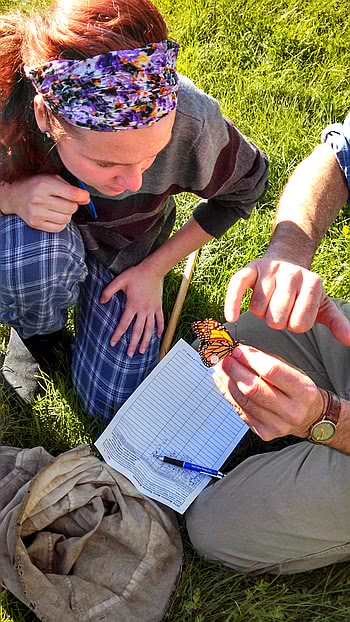
Harper's Environmental Club tagged Monarch butterflies to track their fall migration to Mexico. Butterflies that have been tagged at Harper have been found in the mountains of Mexico months later, thousands of miles away! The Environmental Club does lots of restoration work in local natural areas throughout the year, removing invasive species and creating a better habitat for wildlife. If you like exploring nature and being outside, join the Environmental Club today!
Native Plants are incorporated into the campus landscaping to increase drought tolerance and reduce maintenance.
Timed and Weather Sensitive irrigation systems are in place on campus grounds.
Composting All yard waste is composted on site.